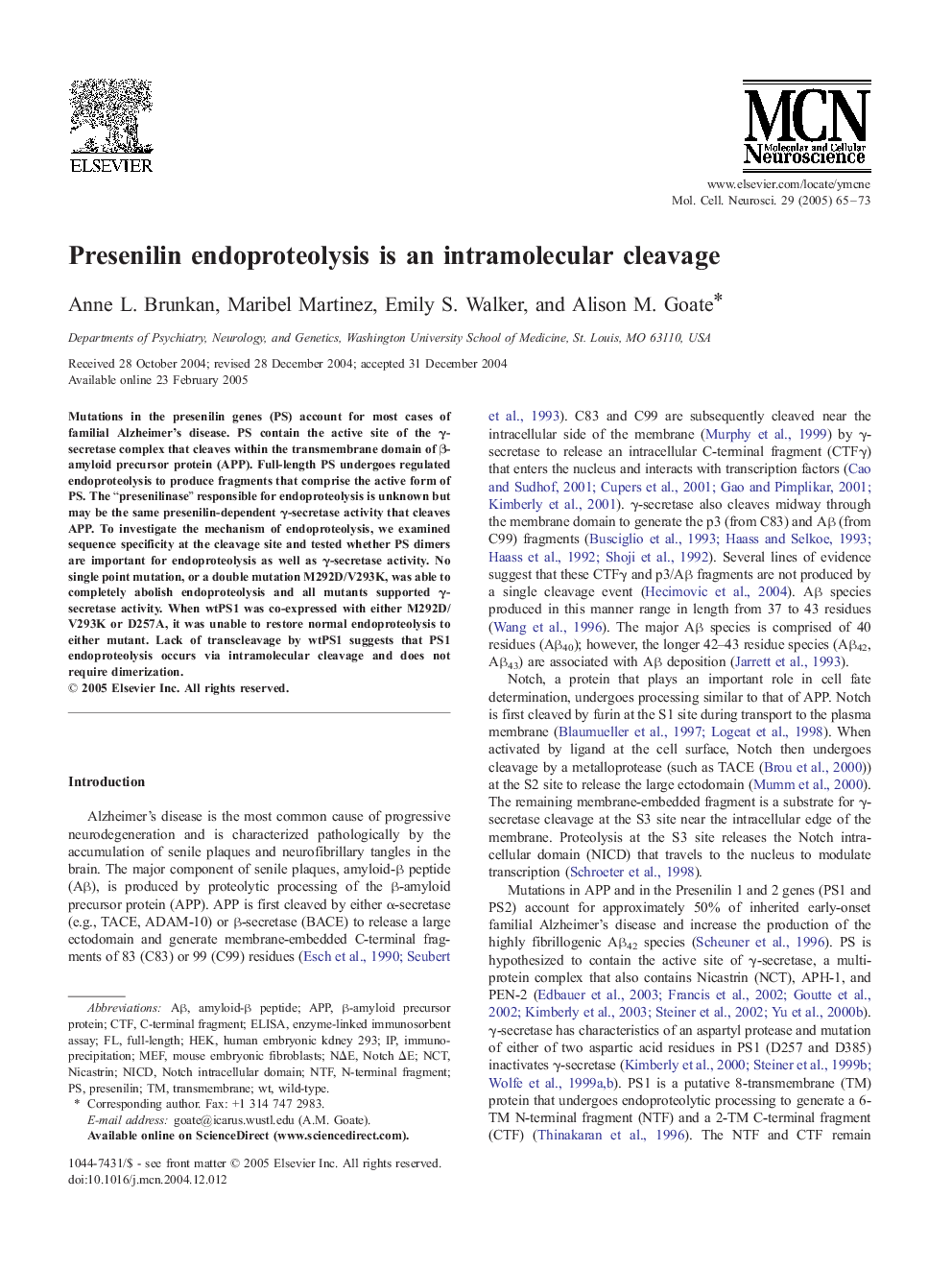| Article ID | Journal | Published Year | Pages | File Type |
|---|---|---|---|---|
| 10956904 | Molecular and Cellular Neuroscience | 2005 | 9 Pages |
Abstract
Mutations in the presenilin genes (PS) account for most cases of familial Alzheimer's disease. PS contain the active site of the γ-secretase complex that cleaves within the transmembrane domain of β-amyloid precursor protein (APP). Full-length PS undergoes regulated endoproteolysis to produce fragments that comprise the active form of PS. The “presenilinase” responsible for endoproteolysis is unknown but may be the same presenilin-dependent γ-secretase activity that cleaves APP. To investigate the mechanism of endoproteolysis, we examined sequence specificity at the cleavage site and tested whether PS dimers are important for endoproteolysis as well as γ-secretase activity. No single point mutation, or a double mutation M292D/V293K, was able to completely abolish endoproteolysis and all mutants supported γ-secretase activity. When wtPS1 was co-expressed with either M292D/V293K or D257A, it was unable to restore normal endoproteolysis to either mutant. Lack of transcleavage by wtPS1 suggests that PS1 endoproteolysis occurs via intramolecular cleavage and does not require dimerization.
Keywords
Related Topics
Life Sciences
Biochemistry, Genetics and Molecular Biology
Cell Biology
Authors
Anne L. Brunkan, Maribel Martinez, Emily S. Walker, Alison M. Goate,
